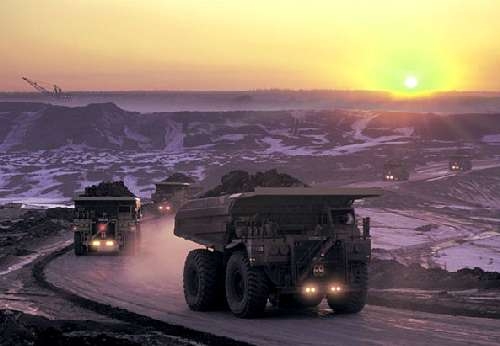
Tar Sands Predicted to Grow by 1 Million Bbl/Day by 2025
Defying increasingly dire concerns about climate change and ongoing price volatility in the oil market, the dirty tar sands are set to increase production by a million barrels a day by 2025, a new report predicts.
 Defying increasingly dire concerns about climate change and ongoing price volatility in the oil market, the dirty tar sands are set to increase production by a million barrels a day by 2025, a new report predicts.
Defying increasingly dire concerns about climate change and ongoing price volatility in the oil market, the dirty tar sands are set to increase production by a million barrels a day by 2025, a new report predicts.
According to leading industry analysts, IHS Energy, the expansion of the tar sands – which environmentalists believe is incompatible with climate goals – will mean an increase in production from 2.4 million barrels to 3.4 million barrels a day.
Although this is a significant increase, it is smaller than would have happened if the oil price collapse had not happened over the last eighteen months.
Construction of new tar sands projects approved before the collapse in oil prices eighteen months ago will add 600,000 barrels a day, with expansion of existing projects making up the remaining 400,000.
But slowly the shift is on developing existing projects, rather than develop new ones.
Kevin Birn, director for IHS Energy said: “We expect oil sands producers to focus future investments in the coming years onto their most economic projects – which we expect to be expansions of existing facilities.”
Birn added “Expansions of existing facilities are better understood, quicker to first oil and lower cost to construct.”
Some in the industry believe that the tar sands will grow by even more, with the Canadian Association of Petroleum Producers predicting that the sector would reach 3.7 million barrels a day by 2030.
In the short-term, though, the fall in the oil price has seriously stymied investment, which looks to be $17 billion this year, exactly half that of 2014. Over 100,000 people have lost direct and indirect jobs relating to the industry.
Given the price collapse, the industry has been looking at ways of cutting costs and IHS estimates that the cost of building and operating tar sands plants has reduced by about $10 since 2014, meaning that the least expensive project, such as expanding thermal operations, could break even at $50 a barrel. However this is still above the current price of oil, with Brent crude trading around $47.39 a barrel.
However the industry still has to find ways of getting its oil to market.
A report released last year by a number of environmental groups, including OCI, called Lockdown: The end of growth in the tar sands, predicted that “ without major new pipelines, the tar sands have run out of room to grow.”
The report concluded that “Further growth in the sector is unlikely to be viable without major pipeline expansion”.
So without pipelines on the ground the industry will continue to struggle, no matter what any forecasts being made by friends of the industry.
